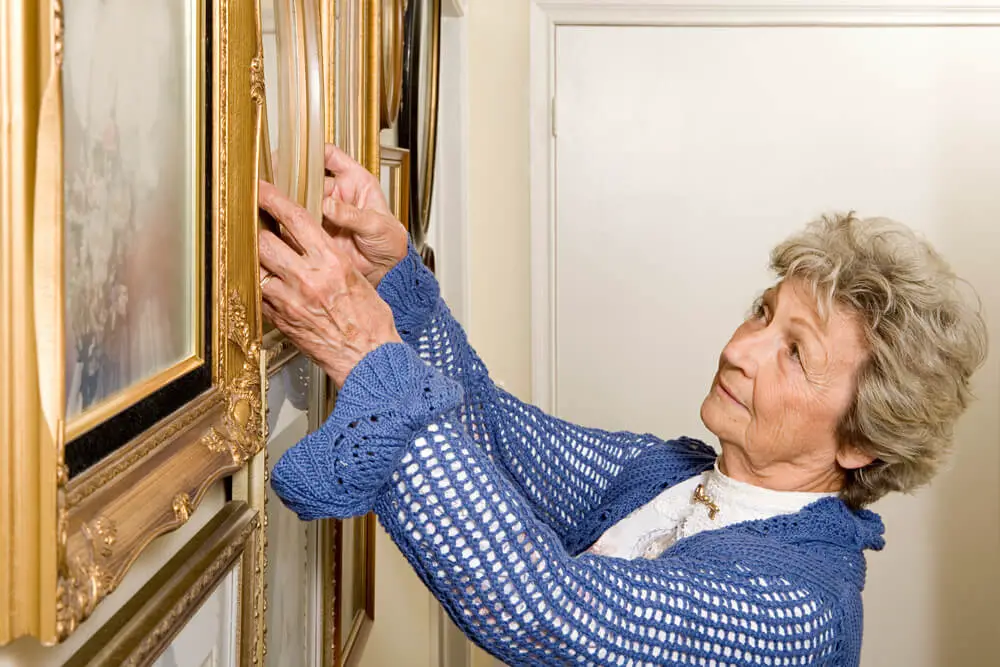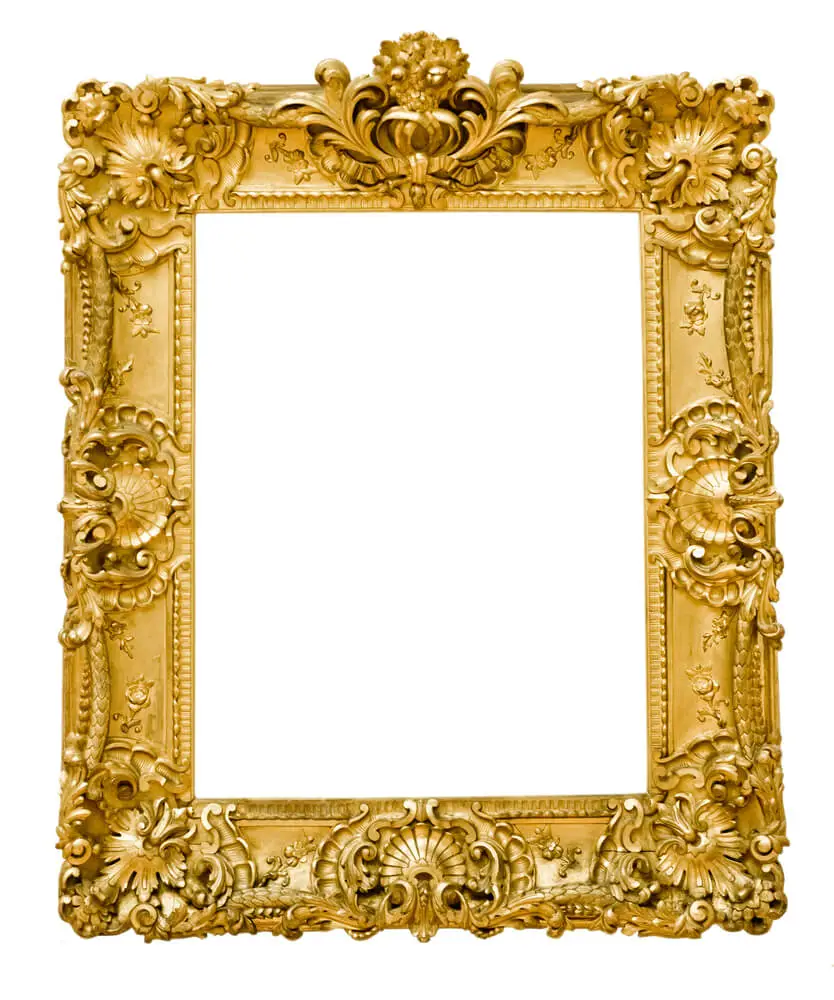As an artist, you want to make sure your oil painting is properly framed so that it lasts for generations.
But with all the different types of frames and mats available, choosing the right one can be daunting. This guide will help you pick the best frame and mat for your masterpiece.
The Importance of Framing Oil Paintings
Framing an oil painting is not just about aesthetics, it plays a vital role in both preserving and presenting the artwork. Frames provide a barrier between the painting and the external environment, helping protect the artwork from damage such as dust, moisture, and physical impact.
Frames also play an important role in the presentation of the painting. They create a defined boundary around the artwork, enhancing the viewer’s focus on the painting. Furthermore, the style, color, and size of the frame can complement or contrast the painting, influencing the overall visual effect of the artwork.
Understanding the Art of Framing Oil Paintings
Framing oil paintings is an art in itself, requiring an understanding of color theory, design principles, and materials. Choosing the right frame involves evaluating the painting’s color scheme, subject matter, style, and size, and pairing these elements with a frame that enhances and complements the artwork.
The frame should balance and harmonize with the painting without overpowering it. The choice of frame can also convey the historical period of the artwork or the preference of the artist or collector.
Different Types of Frames for Oil Paintings
There are several types of frames that can be used for oil paintings. These include traditional frames like the ornate gold gilded frames often seen in museums and more contemporary styles with minimalist designs and clean lines.
Frames also vary in terms of materials used, from wood and metal to synthetic materials. There are also a variety of finishes and colors to choose from. The choice of frame type largely depends on the style of the painting, the intended display location, and personal preference.
Selecting the Perfect Frame: Considerations and Tips
Selecting the perfect frame for your oil painting involves various considerations. First, consider the painting itself – its style, colors, and size. The frame should complement these elements, not compete with them. Second, think about where the painting will be displayed.
The frame should suit the interior decor and the room’s color scheme. Finally, consider practical aspects such as the frame’s durability and the cost. Expert tips include trying out different frames against your painting, either physically or digitally, and seeking advice from framing professionals or other artists.

The Impact of Frame Size on Oil Paintings
The size of the frame has a significant impact on the presentation of an oil painting. A frame that’s too small may make the painting feel cramped or crowded, whereas a frame that’s too large could overpower the artwork.
The width of the frame should be proportionate to the size of the painting. Large paintings often require wider frames to support the weight and balance the visual impact, while smaller paintings can benefit from thinner frames. It’s also important to consider the frame’s depth, as oil paintings are often painted on thick canvases or panels that may require a deeper frame.
Color Coordination: Matching Frames with Artworks
Color coordination between the frame and the artwork is crucial in framing oil paintings. The frame’s color should complement the painting’s color palette, bringing out the painting’s hues rather than clashing with them.
While many opt for neutral colors like black, white, or wood tones, others may choose a color from the painting itself. This can help highlight that color within the painting, creating a harmonious look. However, care should be taken when matching colors as too close a match can appear monotonous or uninteresting.
The Role of Matting in Oil Painting Framing
While matting is not often used with oil paintings, it can provide several benefits in certain situations. Matting can create a buffer between the artwork and the frame, providing additional protection and helping prevent damage. It can also enhance the visual appeal of the artwork by providing a space that allows the eye to rest,
preparing the viewer for the main artwork. However, it’s crucial to choose the right color and material for the mat. Typically, neutral colors are preferred to ensure they do not detract from the artwork. In terms of material, acid-free mats are recommended to prevent any damage to the artwork over time.
Traditional vs. Modern Frames: Which to Choose for Your Oil Painting
The choice between traditional and modern frames depends on the style of the oil painting and the setting where it will be displayed. Traditional frames, such as ornate gold or wood frames, are ideal for classical or historical paintings and for display in traditional interiors.
On the other hand, modern frames, featuring simpler, cleaner lines and often made of materials like metal or acrylic, are suitable for contemporary artworks and modern decor styles. It’s important to note that there are no hard and fast rules in frame selection; what matters most is that the frame complements the artwork and aligns with the personal taste of the owner.

Frame Materials: Wood, Metal, and More
Frames for oil paintings are typically made from a variety of materials including wood, metal, and synthetics. Wood frames are traditional and versatile, offering a wide range of styles, colors, and finishes. They can be stained, painted, or gilded to complement different artworks.
Metal frames, often made of aluminum or steel, offer a sleek, modern look and are generally more durable and resistant to damage. Synthetic frames, made from materials like plastic or resin, can mimic the look of wood or metal at a lower cost, but they may not offer the same level of durability or prestige.
The Process of Custom Framing for Oil Paintings
Custom framing involves creating a frame specifically designed for a particular painting. This process starts with an in-depth consultation with the framer to discuss the artwork, its style, colors, size, and the desired frame style.
The framer then selects suitable materials and designs the frame, ensuring it complements the artwork and meets the client’s preferences. Once designed, the frame is crafted, often by hand, and the painting is mounted within it. Custom framing can be a more expensive option, but it offers the highest level of personalization and quality.
Ensuring Proper Protection with Quality Frames
A quality frame does more than enhance the aesthetics of an oil painting; it also offers critical protection. It shields the painting from environmental factors like dust, humidity, and light, which can cause the artwork to degrade over time.
The frame also provides physical protection against knocks and bumps. When choosing a frame, it’s essential to look for one made of durable materials and designed to securely hold the artwork. Some frames may also feature UV-protective glass or acrylic glazing for additional protection.
Aesthetics and Styles in Oil Painting Frames
The aesthetics and style of a frame can dramatically influence the overall look of an oil painting. An ornate, gold-gilded frame may evoke a sense of grandeur and history, while a simple, black frame can provide a modern, understated look.
Some styles can add a particular character to the artwork—rustic wood frames can lend a country charm, while sleek metal frames can add a contemporary edge. The style of the frame should not only complement the painting but also align with the decor of the space where it will be displayed.
Frame Maintenance: Keeping Your Oil Paintings in Pristine Condition
Proper frame maintenance is essential to keep both the frame and the oil painting in pristine condition. Regular dusting using a soft cloth or a brush can prevent the buildup of dust and dirt. If the frame gets marked, it can often be cleaned with a damp cloth, but be careful not to let water get on the painting.
If the frame is damaged, it may be repairable,but in some cases, it might need to be replaced. Always check with a professional if you’re unsure about how to care for your frame.
Avoid hanging oil paintings in direct sunlight or in areas with high humidity or significant temperature changes, as these conditions can damage both the frame and the artwork.

Hanging and Displaying Framed Oil Paintings
Properly hanging and displaying framed oil paintings is essential for both aesthetic and preservation purposes. When hanging the painting, consider its size and weight. Use appropriate hooks or brackets, and make sure it is level.
The height is also crucial; typically, the center of the painting should be at eye level. Regarding location, choose a spot away from direct sunlight, extreme temperatures, and high-traffic areas to prevent accidental damage.
Consider the wall color and other decor elements to ensure the painting is visually appealing and complements the room.
The Influence of Frame Design on the Perception of Art
The design of a frame can significantly influence how a viewer perceives an oil painting. A frame can direct the viewer’s attention to the artwork, provide context, or even evoke certain emotions. A minimalist, thin frame might keep the focus entirely on the painting, while a bold, ornate frame might be part of the overall artistic statement.
The color of the frame can also impact the painting’s perception, either by highlighting certain colors in the artwork or providing a contrast.
Historical Perspective on Oil Painting Frames
Frames have been used for centuries to enhance and protect artworks. Early frames were often integrated into the architecture of the room and were as grand as the paintings they held. In the 19th century, the trend shifted towards simpler and less ornate frames.
Modern and contemporary frames often reject ornateness altogether, opting for simplicity and allowing the artwork to take center stage. Understanding the history of frames can help in choosing an appropriate frame for oil paintings, particularly for those in historical styles.
Do-It-Yourself (DIY) Oil Painting Framing Tips
For those inclined to DIY, framing your own oil painting can be a satisfying and cost-effective option. Start by carefully measuring your painting and choosing a frame that fits. Consider the style and color of the frame and how it complements your painting.
Use acid-free materials to prevent damage to the painting, and make sure the frame is deep enough to hold the canvas. Always handle the painting with clean hands or gloves, and consider adding a wire at the back for easy hanging.
Where to Buy Frames for Oil Paintings
There are numerous places to purchase frames for oil paintings, ranging from brick-and-mortar stores to online retailers. Local frame shops often provide a wide selection of frames and offer the benefit of seeing and feeling the frame before purchasing.
Art supply stores may also offer a range of frames. Online retailers can provide more variety and competitive pricing, but ensure they have a good return policy in case the frame does not meet expectations. Custom frames can be purchased from specialized framing stores or online from bespoke framing services.

Cost Considerations in Oil Painting Framing
The cost of framing an oil painting can vary widely, depending on the size of the painting, the type of frame, and whether you choose custom framing. Simple, ready-made frames can be relatively inexpensive, but may not perfectly fit or complement your painting.
Custom frames are typically more costly but offer the best fit and personalization. When budgeting for framing, also consider the cost of any additional elements like matting or protective glass.
The Future of Framing: Innovations and Trends in Oil Painting Frames
As with any aspect of design, trends in oil painting frames continue to evolve. We are seeing a move towards more sustainable materials and practices in framing, with reclaimed wood and eco-friendly finishes becoming more popular.
The use of digital tools and technologies is also increasing, with virtual framing apps allowing users to preview how different frames look with their painting before making a purchase. In terms of style, while the minimalist trend continues, there is also a revival of interest in ornate and vintage-style frames.
Moreover, personalized and custom-made frames are also on the rise, reflecting the desire for unique, one-of-a-kind pieces. As technology and tastes evolve, we can expect to see continued innovation and new trends in the art of oil painting framing.
How do you frame a painting step by step?
Framing a painting may seem like an intimidating task, but by taking it one step at a time, the entire process can be quite easy. First of all, measure both the artwork and your frame, ensuring that the frame is no more than an inch larger than the artwork in each dimension.
This will ensure that your frame both fits and accents your piece rather than overpowering it. Then use mounting strips to attach the art to sturdy board material, known as the backing board. The next step is selecting and preparing the different components of your frame, such as the top and bottom crosspieces, side rails, miters, and corner pieces.
Finally, attach said components together with heavy-duty hardware – such as screws or rivets – before firmly securing them around your backing board along with some glue for extra security.
With a little bit of patience and attention to detail you will have successfully framed your artwork!
What is the proper way to frame an oil painting?
Framing an oil painting is not just about making your artwork look more attractive – it can also be a way to preserve and protect it. Properly framed oil paintings will last longer, as the frame will help prevent dust and other air pollutants from damaging the paint.
Before you start framing, it’s important to make sure you have the right materials for each step of the process. You’ll need an acid-free or conservation-grade mat, preferably with a 4-ply minimum thickness; an anti-glare glass; mounting strips that provide adequate space around the artwork;
and a backing board with pre-cut hinges made of archival tape. Once all the necessary items are in place, simply assemble the frame according to instructions specific to your chosen materials. And voila – after minimal effort, you now have a beautifully framed masterpiece!

What kind of frame do I need for an oil painting?
Choosing the right frame for any artwork can be a daunting task, especially when it comes to oil paintings. A good rule of thumb is to opt for bigger and bolder frames – after all, an oil painting is meant to be displayed proudly!
The frames should draw attention to the artwork and complement its shape, color, and texture. Neutral colors work best as they won’t detract from your masterpiece and will create an ideal background setting. Avoid selecting frames with too much detailing that can be overwhelming and end up stealing the show from your oil painting.
Keep in mind that a frame doesn’t have to be expensive – you can always go for a simple and understated one if the money is tight. Above all else, find something that you love!
How do you secure an oil painting in a frame?
Securing an oil painting in a frame is a delicate process that not only requires the right supplies, but also careful consideration and patience.
The first step is to pick out a high-quality frame that complements the painting and provides adequate protection.
After gaining the necessary supplies, such as backing board, mounting hardware, and framing tape, you will need to cut the matting and backboard to size with a bevel cut for extra strength. Using hinging tape after stapling or gluing the artwork is important for secure placement inside of the frame.
If done correctly, your prized painting will last many years without the risk of damage from improper framing.
How long should an oil painting dry before framing?
When it comes to framing an oil painting, timing is key. You want the painting to be fully dry before it’s mounted in a frame for display. If the paint is wet and you frame it, the moisture can cause damage to both the painting and the frame.
As such, how long should you wait before framing? The rule of thumb is that your painting should be drying for three months at minimum; naturally, this varies depending on the type of paint and brush technique used.
Some recommend letting oil paintings dry for six months or even a year before framing them to ensure that there will be no further changes to their size or dimension.
What is the most basic framing method?
Framing is an important task for any structure, from buildings and houses to ships and even garden furniture. You want to ensure the frame is strong and durable so that it can stand the test of time while providing structural support.
The most basic framing method is known as post and beam construction where you join posts together with beams, usually made out of wood. This is a tried and tested method going back centuries and it continues to be used by builders today as it offers great stability while also being relatively simple.
The design possibilities are pretty vast too as you can create a variety of shapes with post and beam frames. So if you’re looking for a reliable yet straightforward framing method, look no further than post and beam construction!
Conclusion: The Art and Importance of Framing Oil Paintings
The framing of oil paintings is an integral part of presenting, preserving, and appreciating these artworks. A well-chosen frame not only protects a painting but also enhances its visual appeal, influences the perception of the artwork, and complements the decor of the space where it is displayed.
From understanding the various types of frames and materials available to considering aspects such as color coordination, frame size, and the role of matting, there are numerous factors involved in the art of framing. Whether you opt for a traditional wood frame, a sleek metal design, or a custom-made frame, the choice ultimately needs to harmonize with the painting and reflect your personal taste.
Looking toward the future, innovations in materials and digital technologies are likely to provide even more options for framing oil paintings. By giving careful thought to the framing of your oil paintings, you can ensure these treasured artworks are beautifully presented and well-protected for many years to come.


















